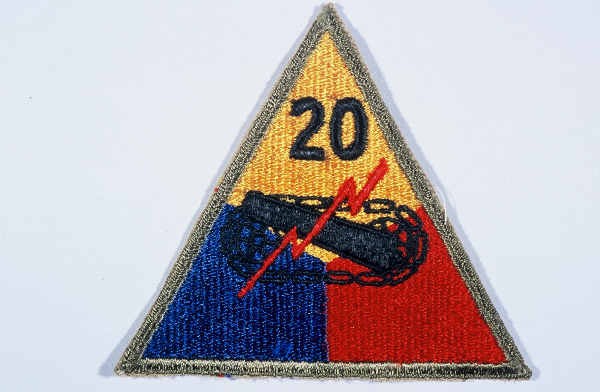The 20th Armored Division during World War II
In 1985, the United States Holocaust Memorial Museum and the US Army Center of Military History began a program to honor US Army divisions that took part in the Allied liberation of Nazi camps. The US Army Center of Military History defines a liberating division as one whose official records show its presence at a camp within 48 hours of the first soldier’s arrival. The 20th Armored Division is among the 36 US divisions that have been recognized to date.
Key Facts
-
1
US, British, Soviet, and Canadian troops encountered concentration camps and other sites of Nazi crimes as they advanced across Europe in 1944 and 1945.
-
2
The Allied soldiers liberated sick and starving camp prisoners from Nazi tyranny. They also provided them with food, clothing, and medical aid.
-
3
The United States Holocaust Memorial Museum and the US Army Center of Military History have recognized 36 US divisions for their role in the liberation of Nazi camps.
20th Armored Division Campaigns during World War II
The 20th Armored Division disembarked at the French port of Le Havre in February 1945. In April, the division moved through Belgium and into Germany. Later that month, the 20th advanced deep into Bavaria, crossing the Danube River and capturing the city of Munich on April 30, 1945. The end of hostilities found this tank division in Austria.
The 20th Armored Division and the Liberation of Dachau
On April 29, 1945, the 20th Armored Division was one of three US Army divisions to take part in the liberation of the Dachau concentration camp.
Recognition as a Liberating Division
The 20th Armored Division was recognized as a liberating unit by the US Army's Center of Military History and the United States Holocaust Memorial Museum in 1985.
20th Armored Division Battle Casualty Figures
Hundreds of thousands of US servicemen and women died or were wounded in the fight against Nazi tyranny.
The total number of battle casualties for the 20th Armored Division in the European Theater of Operations during World War II was 186. In this case, “battle casualties” includes all personnel who were unable to fight in battle because they were wounded, missing, captured, or killed.
Among the battle casualties suffered by the 20th Armored Division, there were 59 deaths.
20th Armored Division Nickname and Insignia
The 20th Armored Division did not have a nickname commonly associated with it. During World War II, however, it was sometimes called "Armoraiders."
The patch or insignia of the 20th Armored Division is shaped like a pyramid and represents power. In the center of the patch are three intertwined symbols in black: a tank tread, a cannon, and a lightning bolt. The tank tread symbolizes mobility. The cannon represents firepower. And the lightning bolt stands for shock action (a quick, offensive, military attack that surprises the enemy). The three symbols are placed against a tricolored background comprised of yellow, red, and blue. These colors represent key components of an armored division: cavalry (yellow), field artillery (red), and infantry (blue). The division number appears in black near the top of the pyramid (against the yellow part of the patch).

Footnotes
-
Footnote reference1.
In the aftermath of World War II, the US Department of the Army compiled casualty figures for US Army personnel. The US government published these figures in 1953. The report listed casualty numbers for the US Army for the period from December 7, 1941 (Pearl Harbor) through December 31, 1946, when US President Harry S. Truman officially declared the end of war hostilities. Army Battle Casualties and Nonbattle Deaths: Final Report, 7 December 1941-31 December 1946, Prepared by the Statistical and Accounting Branch, Office of the Adjutant General, Under the Direction of the Program Review and Analysis, Division of the Comptroller of the Army, O.C.S., (Washington: Department of the Army, 1953), p. 3-4, 84-89.
Critical Thinking Questions
What challenges did Allied forces face when they encountered the camps and sites of other atrocities?
What challenges faced survivors of the Holocaust upon liberation?

